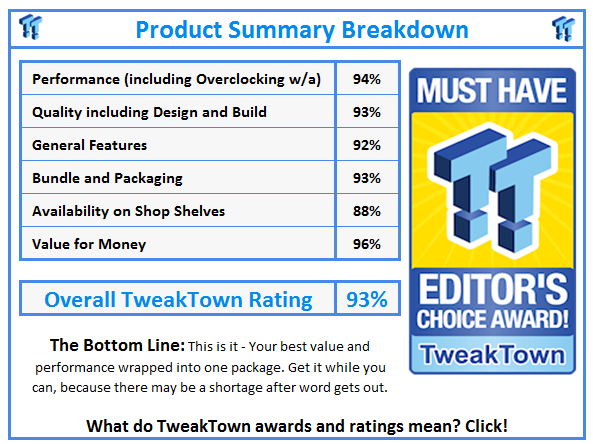Introduction
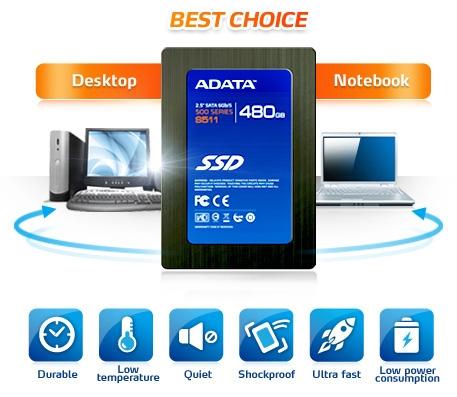
ADATA isn't new to the SATA III market. The company already released the S501; a Marvell controlled SATA III drive with good wear capabilities. The S501 was a stopgap product between ADATA's successful S599 SandForce SF-1200 drive and the new S511 featuring SandForce's latest flagship, the SF-2281.
There's been a lot of talk about synchronous vs. asynchronous flash lately thanks to an article I wrote here. The ADATA S511 uses synchronous flash, the good stuff. ADATA doesn't mention this information on their website and I'm not sure why. Synchronous flash performs better across the board even though most armature blog sites will tell you that only compressed data is affected.
In the past ADATA has competed for the price / performance crown and the new S511 is no exception. ADATA is already very competitive with products like the Vertex 3, Force GT and other comparable synchronous flash products on the market today. The question we're going to answer today is if the ADATA S511 also competes with the massive performance of other synchronous flash drives sporting SandForce SF-2281 controllers.
Specifications, Pricing and Availability
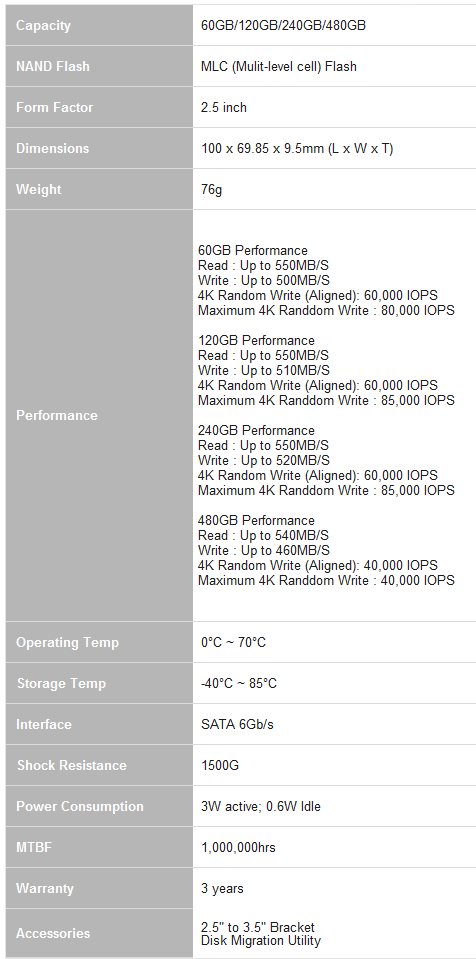
ADATA has released four capacity sizes in the S511 Series. The capacities are standard SandForce sizes; 60GB, 120GB, 240GB and a massive 480GB. Today we're looking at the 240GB, a good price, performance and capacity size that is very popular with both notebook and desktop users.
ADATA is accurately listing performance information differently for each capacity size. Our 240GB sample shows a read speed of 550MB/s and a write speed of 520MB/s. The IOPS is rated at 60K for 4K Random Write aligned and a peak IOPS write of 85K. Users should see the 85K peak as a test is started and then after a short period of time the performance dips to 60K.
Newegg already lists the ADATA S511 Series drives. The 60GB is available today for 154.99, the 120GB for 189.99, the 240GB that we are reviewing today for 454.99 and the big dog 480GB for 1399.99.
These prices are very competitive to competing drives like the OCZ Technology Vertex 3 and in many cases, the ADATA versions cost less. This is very good for the consumer since ADATA's ability to manufacture their own products will keep them ahead of many other companies that are just reselling products made by third-party manufacturers.
When it comes to value-added goodies, ADATA includes a three year warranty. The accessory package also includes a desktop adapter bracket.
The Packaging
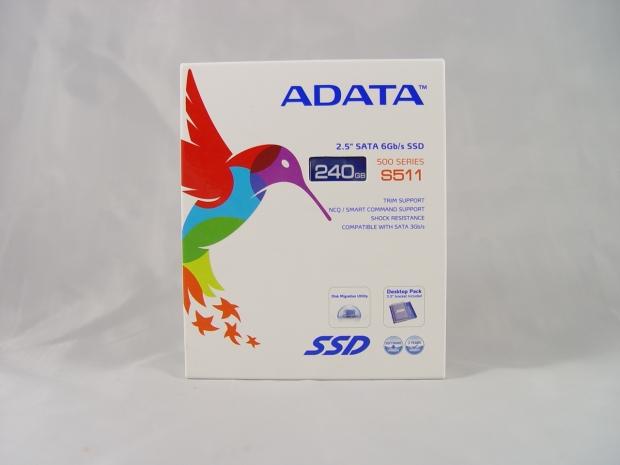
The ADATA S511 package hasn't changed much since we reviewed the S599 drive last year. ADATA's hummingbird is still on the cover. Some information about the feature set is included on the front of the package and you can see the drive's capacity through the window on the front.
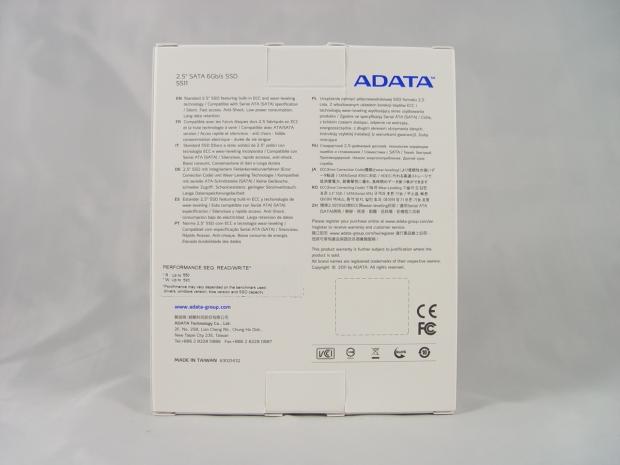
On the back you'll find some general information about ADATA SSDs and some performance information via a sticker added to the package.
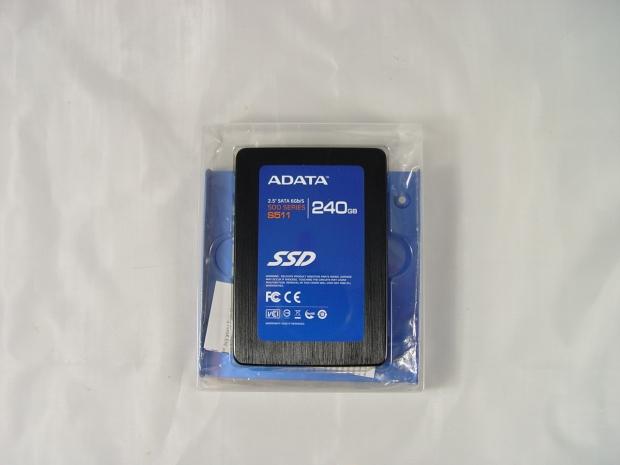
The inner packaging keeps the desktop adapter bracket separate from the drive. ADATA also includes a quick start guide to get you ready for the installation.
The ADATA S511 240GB SSD
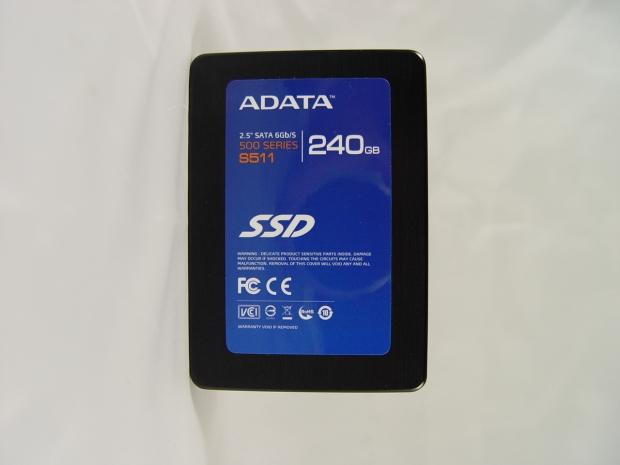
If you own an S599 Series SSD from last year then you'll easily recognize the S511. The drive case is the same for both series. ADATA lists the capacity information on the front and the drive model number.
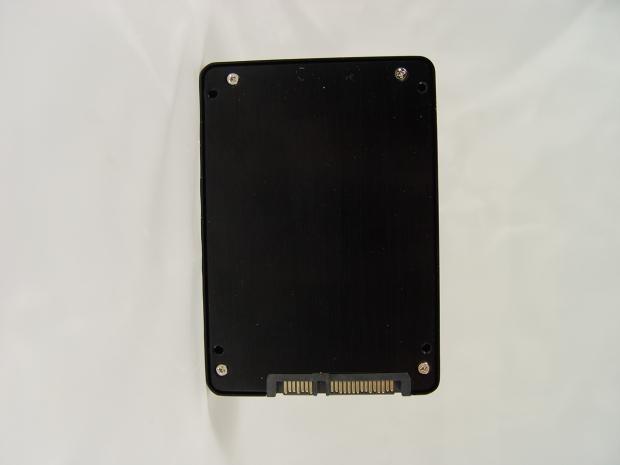
The back of the drive is void of information, but we do see the standard mounting locations where they should be.
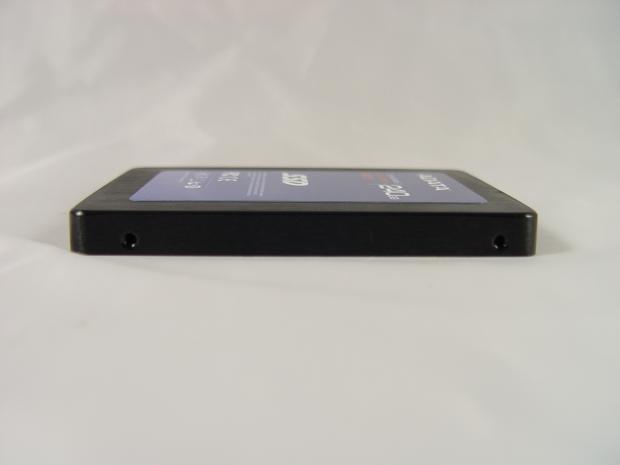
The side mounting points are also where they should be.
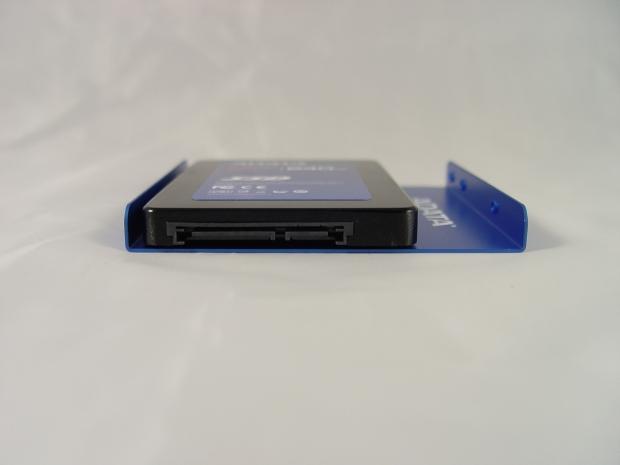
The drive has the SATA power and data connectors located where they should be. The desktop adapter bracket that is included with the S511 also offsets the SATA connectors, so you won't have any issues with installing the drive in your current system.
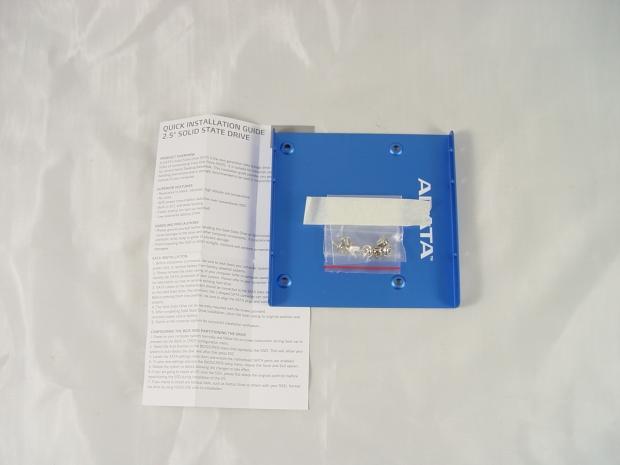
Here we see the included accessory package in detail. You get a Quick Installation Guide, desktop adapter bracket and accompanying screws to get your drive installed.
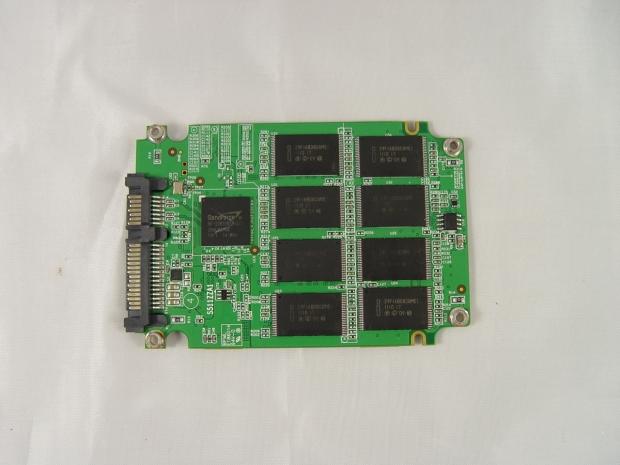
ADATA chose to use high quality Intel 25nm synchronous flash with the S511. This is the highest quality flash on the market today.
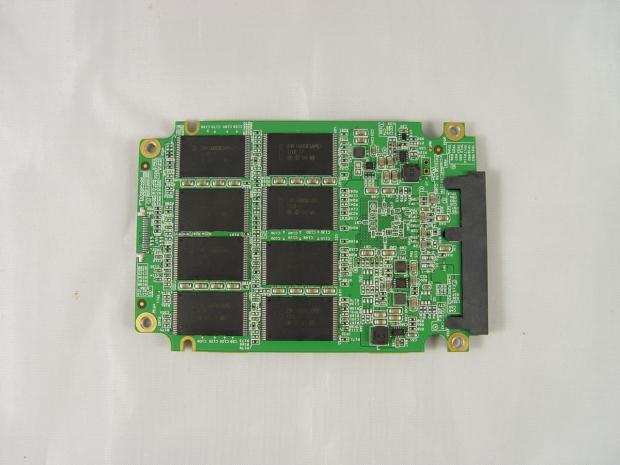
There are sixteen NAND flash chips on the 240GB drive we're looking at today.
Test System Setup and ATTO Baseline Performance
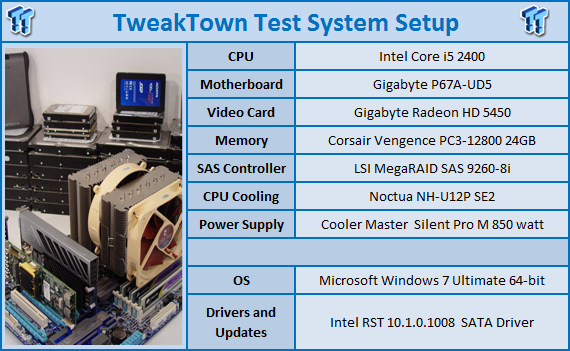
We would like to thank the following companies for supplying and supporting us with our test system hardware and equipment: AVADirect, GIGABYTE, Cooler Master, LSI, Corsair and Noctua.
You can read more about TweakTown's Storage Product Testing Workstation and the procedures followed to test products in this article.
In order to get the most out of your ADATA S511 you'll need a motherboard with native SATA III. We're fond of GIGABYTE motherboards running either P67 or Z68 chipsets since they provide great SATA III speeds and are of high quality.
ATTO Baseline Performance
Version and / or Patch Used: 2.34
ATTO is used by many disk manufacturers to determine the read and write speeds that will be presented to customers.
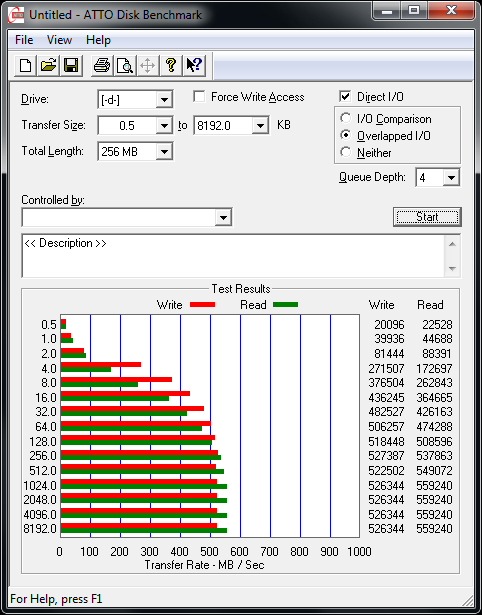
In ATTO we achieved a maximum read speed of just below 556MB/s and a write speed of just over 526MB/s. This is a little faster than ADATA's specified performance information. We like getting more performance!
Benchmarks - HD Tune Pro
HD Tune Pro
Version and / or Patch Used: 4.00
Developer Homepage: http://www.efdsoftware.com
Product Homepage: http://www.hdtune.com
HD Tune is a Hard Disk utility which has the following functions:
Benchmark: measures the performance
Info: shows detailed information
Health: checks the health status by using SMART
Error Scan: scans the surface for errors
Temperature display
HD Tune Pro gives us accurate read, write and access time results and for the last couple of years has been gaining popularity amongst reviewers. It is now considered a must have application for storage device testing.
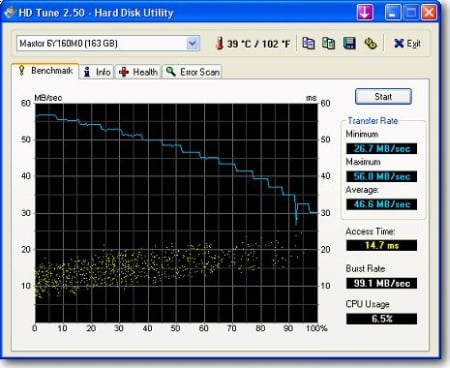
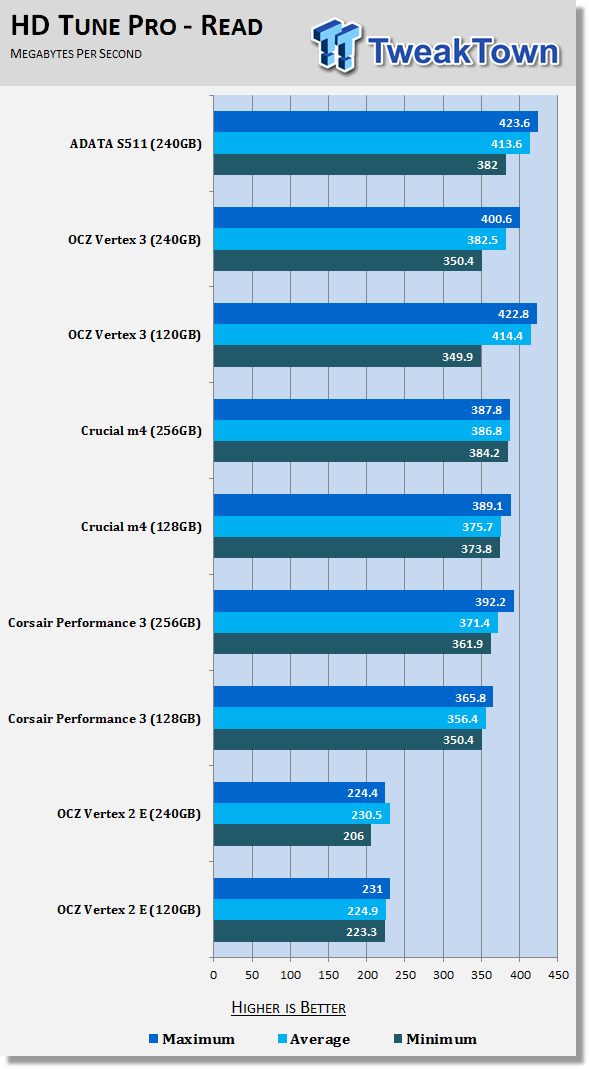
The ADATA S511 240GB produced a nice read performance graph with very little variation in the performance across the drive. We achieved an average read speed of just over 413MB/s, a score that nearly matched the fastest drive on our charts.
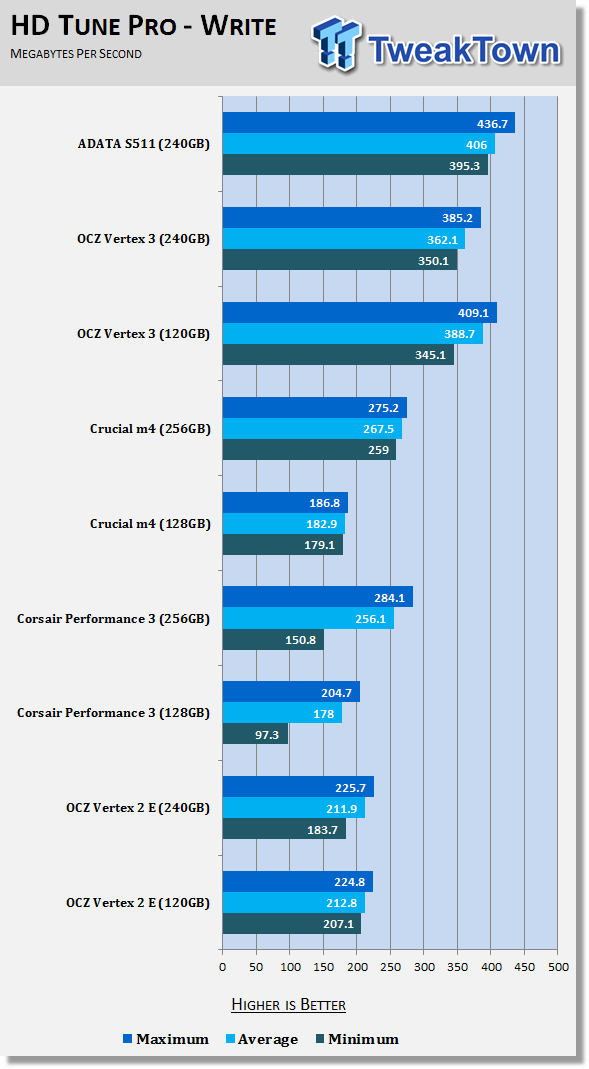
The S511 240GB also performed very well in the HD Tune Pro Write Test. The performance had a few peaks and valleys, but the average score was 406MB/s with a peak of 436.7. The low point measured was 395MB/s which is still very fast even for a SandForce SF-2281 controlled drive.
Benchmarks - AIDA64 Random Access Time
AIDA64 Random Access Time
Version and / or Patch Used: 1.60
Developer Homepage: http://www.aida64.com
Product Homepage: http://www.aida64.com
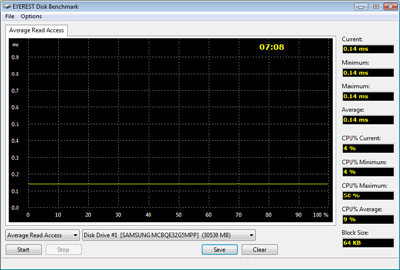
AIDA64 offers several different benchmarks for testing and optimizing your system or network. The Random Access test is one of very few if not only that will measure hard drives random access times in hundredths of milliseconds as oppose to tens of milliseconds.
Drives with only one or two tests displayed in the write test mean that they have failed the test and their Maximum and possibly their Average Scores were very high after the cached fills. This usually happens only with controllers manufactured by JMicron and Toshiba.
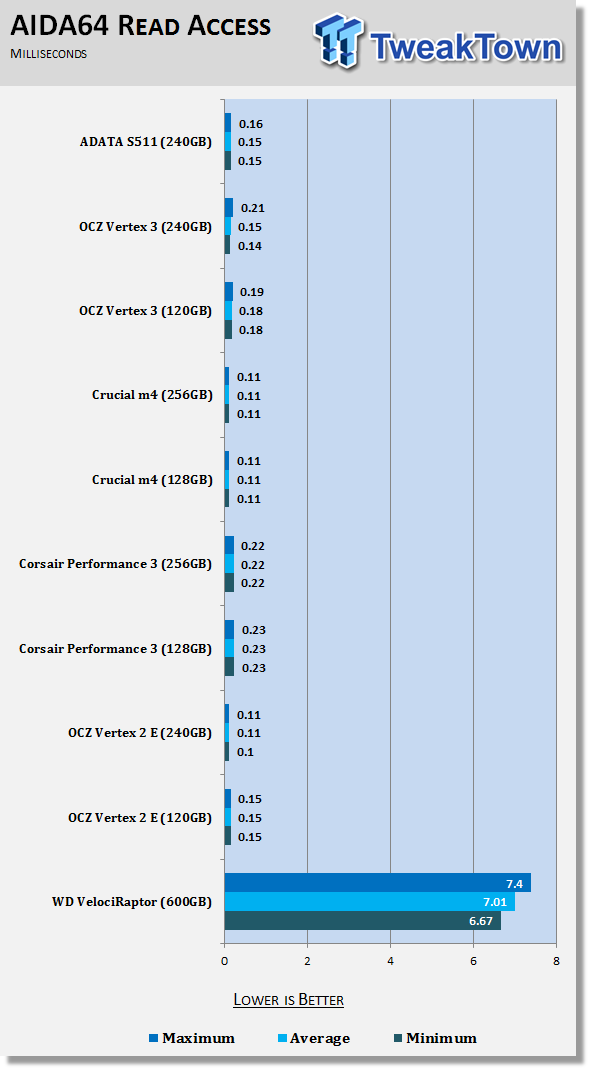
Companies like to talk about their large read and write performance, but users new to SSDs find that access time is felt more than the transfer speeds. The S511 measures .15ms average read access which is a magnitude faster than the Western Digital VelociRaptor 600GB platter drive.
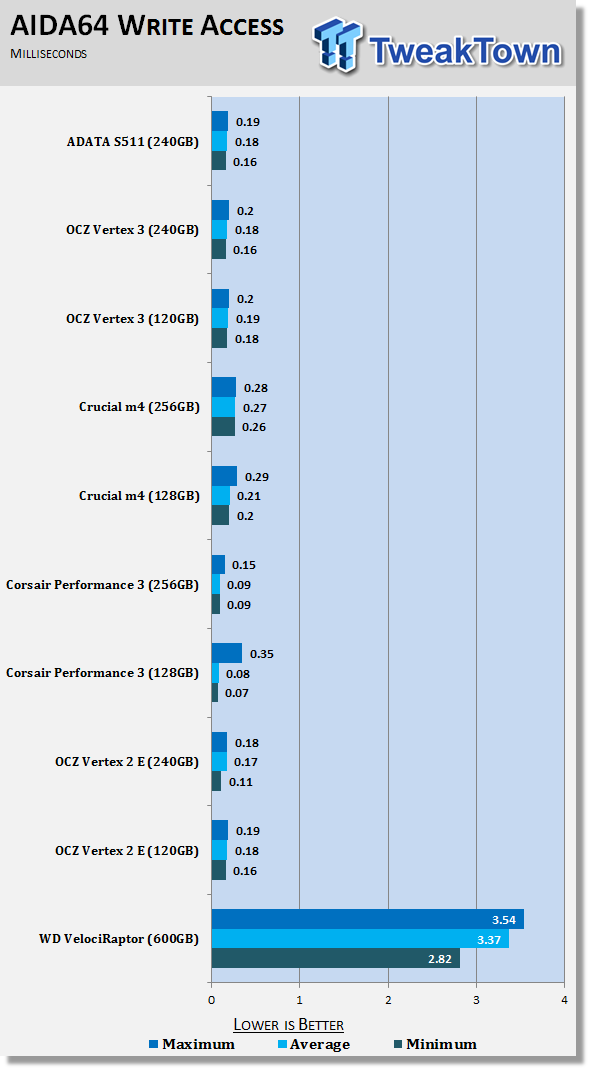
The write access times were in line with other modern solid state drives. We measured an average of .18ms. This allows you to install programs very quickly.
Benchmarks - CrystalDiskMark
CrystalDiskMark
Version and / or Patch Used: 3.0 Technical Preview
Developer Homepage: http://crystalmark.info
Product Homepage: http://crystalmark.info/software/CrystalDiskMark/index-e.html
Download here: http://crystaldew.info/category/software/crystaldiskmark
CrystalDiskMark is a disk benchmark software that allows us to benchmark 4K and 4K queue depths with accuracy.
Key Features:-
* Sequential reads/writes
* Random 4KB/512KB reads/writes
* Text copy
* Change dialog design
* internationalization (i18n)
Note: Crystal Disk Mark 3.0 Technical Preview was used for these tests since it offers the ability to measure native command queuing at 4 and 32.
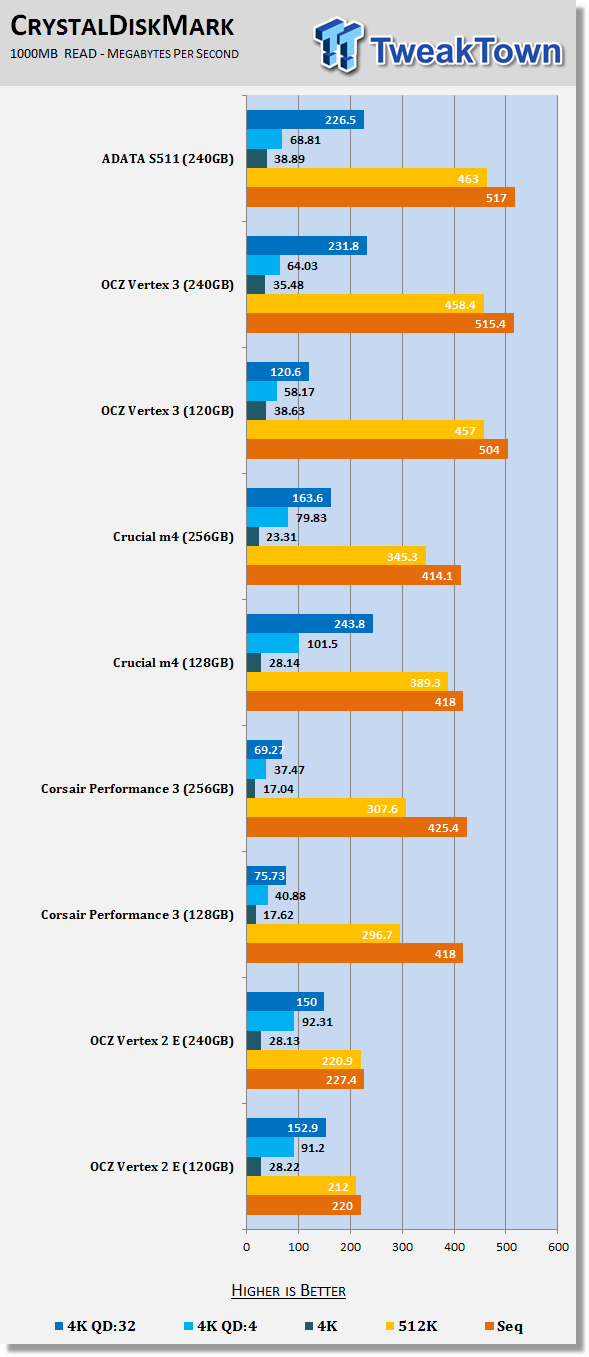
In CDM we recorded nearly identical performance as the OCZ Vertex 3 240GB. Both drives share the same controller and same Intel 25nm NAND flash, so this wasn't a big surprise. The two drives when tested used different firmware.
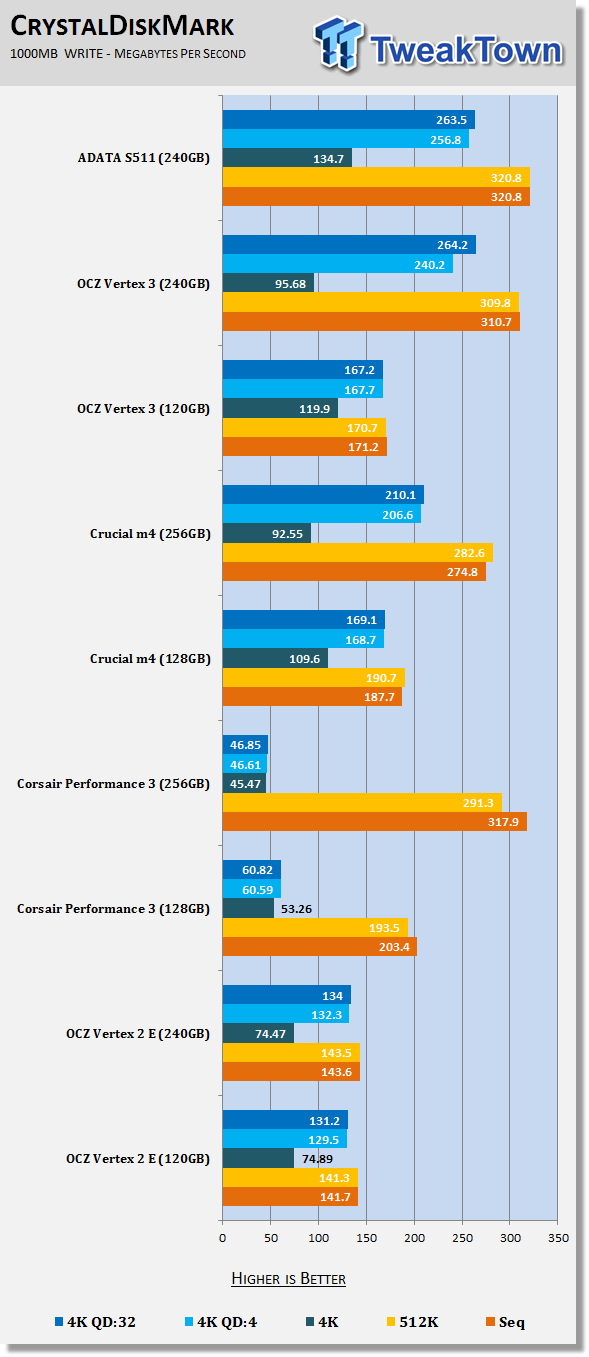
The newer firmware on the S511 allowed the ADATA drive to outperform the OCZ Vertex 3 240GB. This is an area where SandForce is making strides to increase performance.
Benchmarks - PCMark Vantage Hard Disk Tests
PCMark Vantage - Hard Disk Tests
Version and / or Patch Used: 1.0.0
Developer Homepage: http://www.futuremark.com
Product Homepage: http://www.futuremark.com/benchmarks/pcmark-vantage/

PCMark Vantage is the first objective hardware performance benchmark for PCs running 32 and 64 bit versions of Microsoft Windows Vista. PCMark Vantage is perfectly suited for benchmarking any type of Microsoft Windows Vista PC from multimedia home entertainment systems and laptops to dedicated workstations and high-end gaming rigs. Regardless of whether the benchmarker is an artist or an IT Professional, PCMark Vantage shows the user where their system soars or falls flat, and how to get the most performance possible out of their hardware. PCMark Vantage is easy enough for even the most casual enthusiast to use yet supports in-depth, professional industry grade testing.
FutureMark has developed a good set of hard disk tests for their PCMark Vantage Suite. Windows users can count on Vantage to show them how a drive will perform in normal day to day usage scenarios. For most users these are the tests that matter since many of the old hat ways to measure performance have become ineffective to measure true Windows performance.

HDD1 - Windows Defender
HDD2 - Gaming
HDD3 - Windows Photo Gallery
HDD4 - Vista Startup
HDD5 - Windows Movie Maker
HDD6 - Windows Media Center
HDD7 - Windows Media Player
HDD8 - Application Loading
The ADATA S511 240GB delivers amazing desktop performance in the tasks you perform every day. We recorded some of the highest numbers to date for an SSD with Intel 25nm flash.
PCMark Vantage - Drives with Data Testing
For a complete breakdown on the Drives with Data Testing please read this article. You will be able to perform this test at home with the files provided in the article - full instructions are included.
Brief Methodology
SSDs perform differently when used for a period of time and when data is already present on the drive. The purpose of the Drives with Data testing is to show how a drive performs in these 'dirty' states. SSDs also need time to recover, either with TRIM or onboard garbage collection methods.
Drives with Data Testing - 25%, 50%, 75% Full States and Dirty / Empty Test
Files needed for 60 (64GB), 120 (128GB), 240 (256GB)
60GB Fill - 15GB, 30GB, 45GB
120GB Fill - 30GB, 60GB, 90GB
240GB Fill - 60GB, 120GB, 160GB
Empty but Dirty - a test run just after the fill tests and shows if a drive needs time to recover or if performance is instantly restored.

HDD1 - Windows Defender
HDD2 - Gaming
HDD3 - Windows Photo Gallery
HDD4 - Vista Startup
HDD5 - Windows Movie Maker
HDD6 - Windows Media Center
HDD7 - Windows Media Player
HDD8 - Application Loading
The synchronous flash allows the ADATA S511 to retain much of its speed even when the drive has data on it. Here we see the difference between the OCZ Agility 3 which uses asynchronous flash. This is a very big deal for users since very few people use their SSD without data on it.
Benchmarks - AS SSD
AS SSD Benchmark
Version and / or Patch Used: 1.2.3577.40358
Developer Homepage: Alex Intelligent Software
Product Homepage: Alex Intelligent Software
Download here: http://www.alex-is.de/PHP/fusion/downloads.php?cat_id=4&download_id=9
AS determines the performance of Solid State Drives (SSD). The tool contains four synthetic as well as three practice tests. The synthetic tests are to determine the sequential and random read and write performance of the SSD. These tests are carried out without the use of the operating system caches.
In all synthetic tests the test file size is 1GB. AS can also determine the access time of the SSD, the access of which the drive is determined to read through the entire capacity of the SSD (Full Stroke). The write access test is only to be met with a 1 GB big test file. At the end of the tests three values for the read and write as well as the overall performance will be issued. In addition to the calculated values which are shown in MB/s, they are also represented in IO per seconds (IOPS).
Note: AS SSD is a great benchmark for many tests, but since Crystal Disk Mark covers a broader range of 4K tests and HD Tune Pro covering sequential speeds, we will only use the Copy Benchmark from AS SSD.
- Copy Benchmark
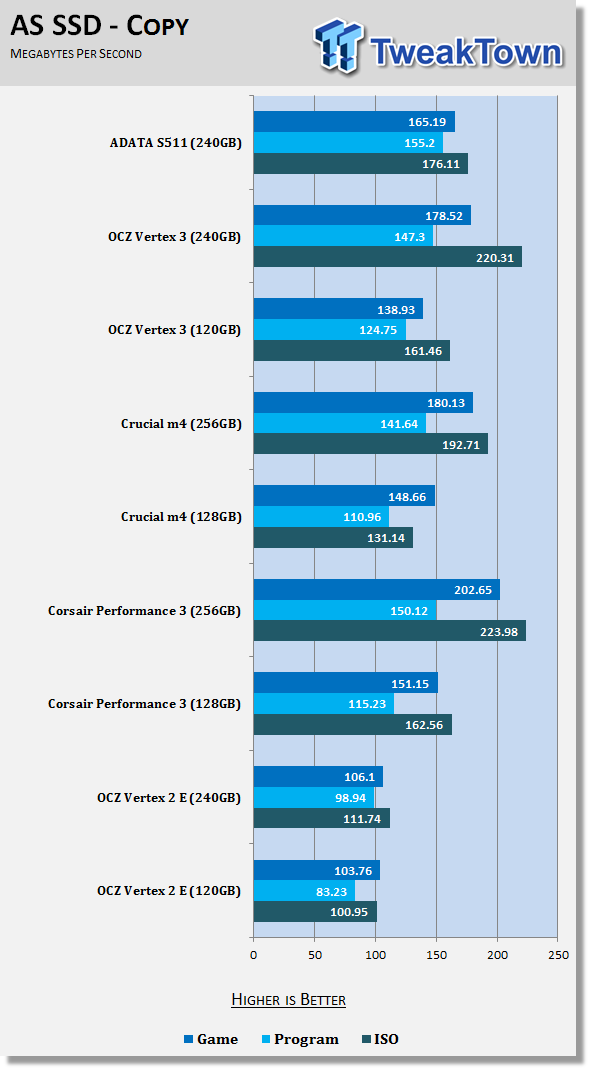
In AS SSD's Copy Benchmark we noticed that the ADATA S511 is a little slower than some of the older SF-2281 controlled drives, but ADATA was able to outperform the older SF-1200 controlled drives.
Benchmarks - Passmark
Passmark Advanced Multi-User Tests
Version and / or Patch Used: 6.1
Developer Homepage: http://www.passmark.com
Test Homepage: http://www.passmark.com
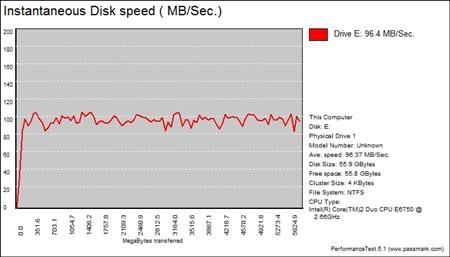
Many users complain that I/O Meter is too complicated of a benchmark to replicate results so my quest to find an alternative was started. Passmark has added several multi-user tests that measure a hard drives ability to operate in a multi-user environment.

The tests use different settings to mimic basic multi-user operations as they would play out on your server. Variances is read / write percentage as well as random / sequential reads are common in certain applications, Web Servers read nearly 100% of the time while Database Servers write a small amount of data.
The Workstation test is the only single user environment and will be similar to how you use your system at home.
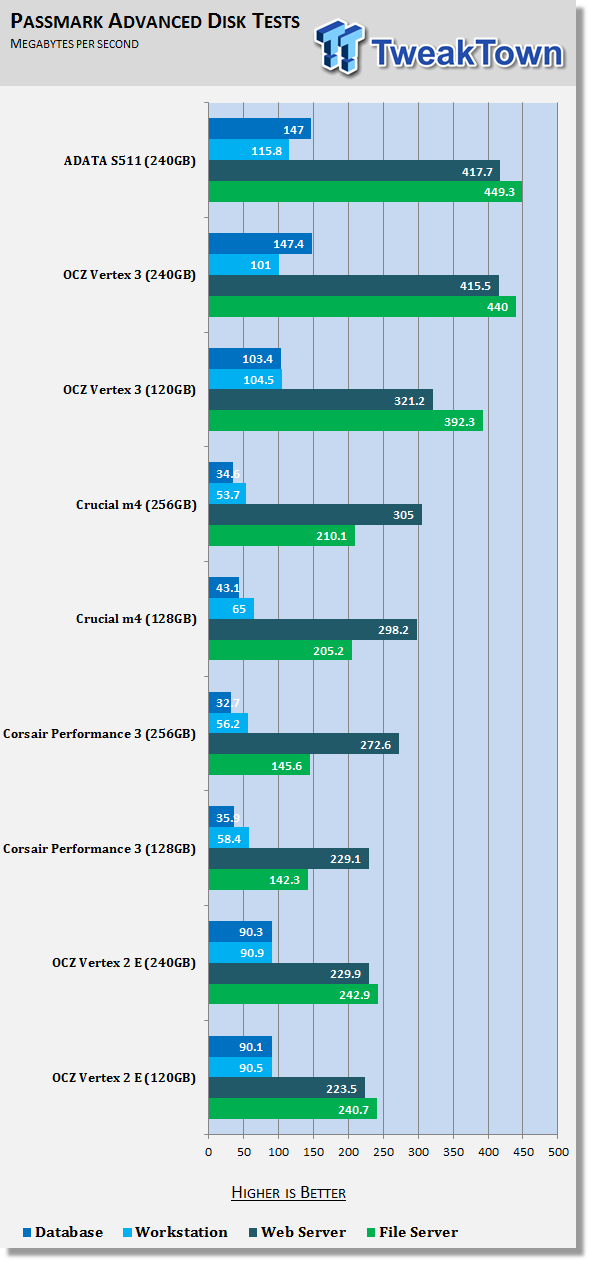
The ADATA S511 is a consumer product, but because of its high speed some may start to look at this series for server use. Since the SF-2281 controller is very close to SandForce's enterprise products, I can see this being an option for high read, low write situations. Users looking for a drive for high write loads will want to look at some of the proper enterprise SSDs.
Final Thoughts
ADATA SSDs are about maximizing two key areas, performance and value. ADATA owns their manufacturing facility; we visited it last year during Computex. This allows ADATA to compete on the price front with other manufacturers, but there were other issues in last year's products that we identified. The first was actually finding an ADATA S599 drive. The first few batches arrived on US shores and kept e-tailers stocked up, but later in the year the S599 became more difficult to purchase. We're seeing a lot of similarities with the S511. The S511 offers all the same performance as the Vertex 3 and at a lower price point. Hopefully ADATA is able to keep stock on e-tail shelves after the word gets out and the drive becomes popular.
Speaking of popularity, the ADATA S511 should be a big hit with mainstream users, enthusiasts and power users alike. The price is very good and ADATA will do everything they can to keep the cost at the low end of the SF-2281 market. At the same time, the performance is amazing for a product that costs as low as 199.99 for a 120GB drive.
When it comes to performance there is no trickery going on, no asynchronous flash to get you tripped up later when you actually start using your drive. So far we've seen several manufacturers release both async and synch drives, but it looks like ADATA is sticking with synchronous flash and not tarnishing their reputation with a drive that performs much slower than what you're lead to believe by a specification sheet. I respect that and feel others should as well when making their purchasing decision.
Today we looked at the performance of the 240GB drive, but plan on reviewing a 60GB and 120GB in the next month. If you're looking for a 240GB drive and asking the question on which drive to get while looking for the best value, this is quite possibly it. The 240GB S511 currently costs 454.99 at Newegg, the lowest priced 240GB SF-2281 / IMFT 25nm sync flash drive there. If you're in the market, don't wait, because they won't last long!

